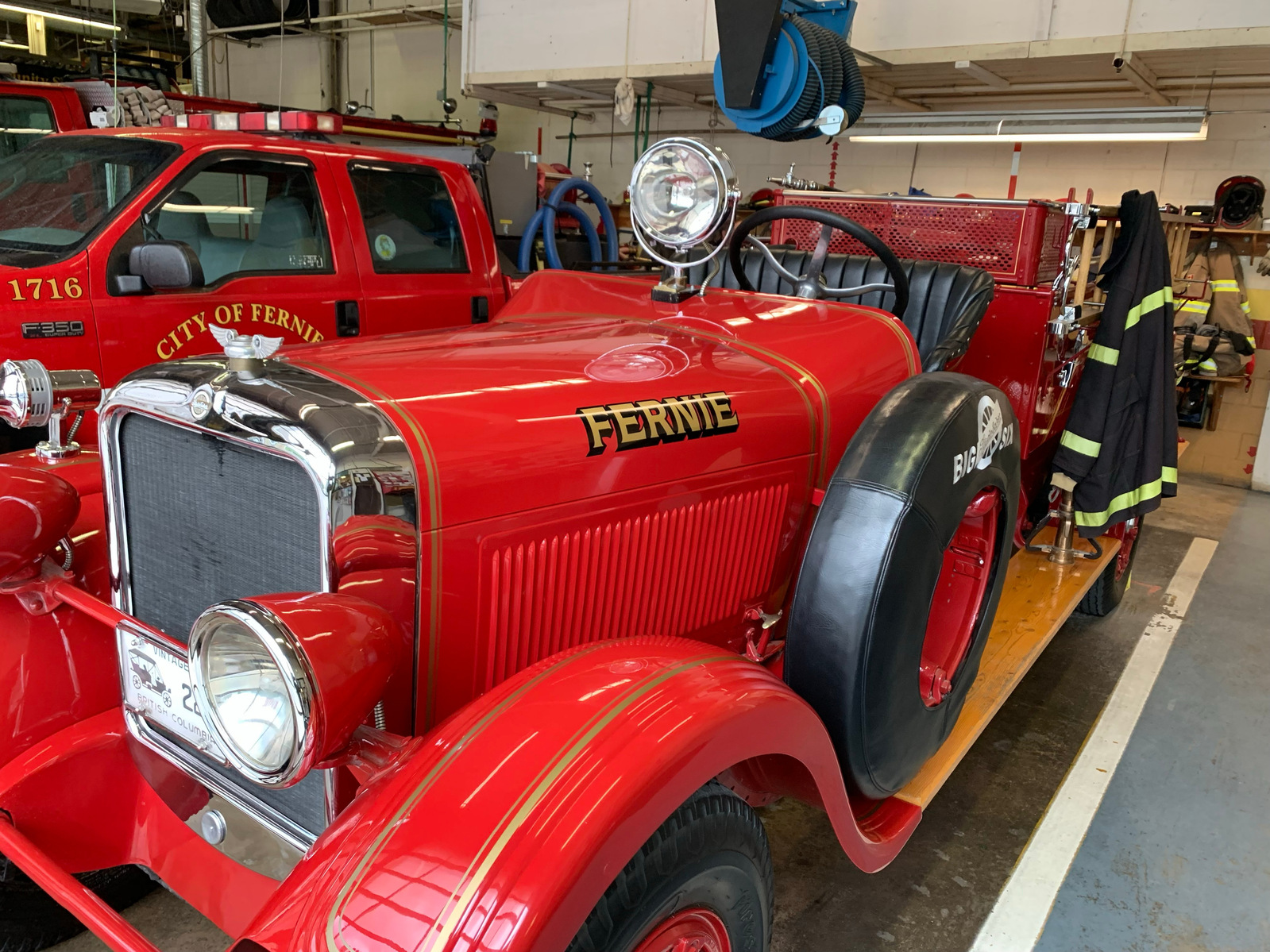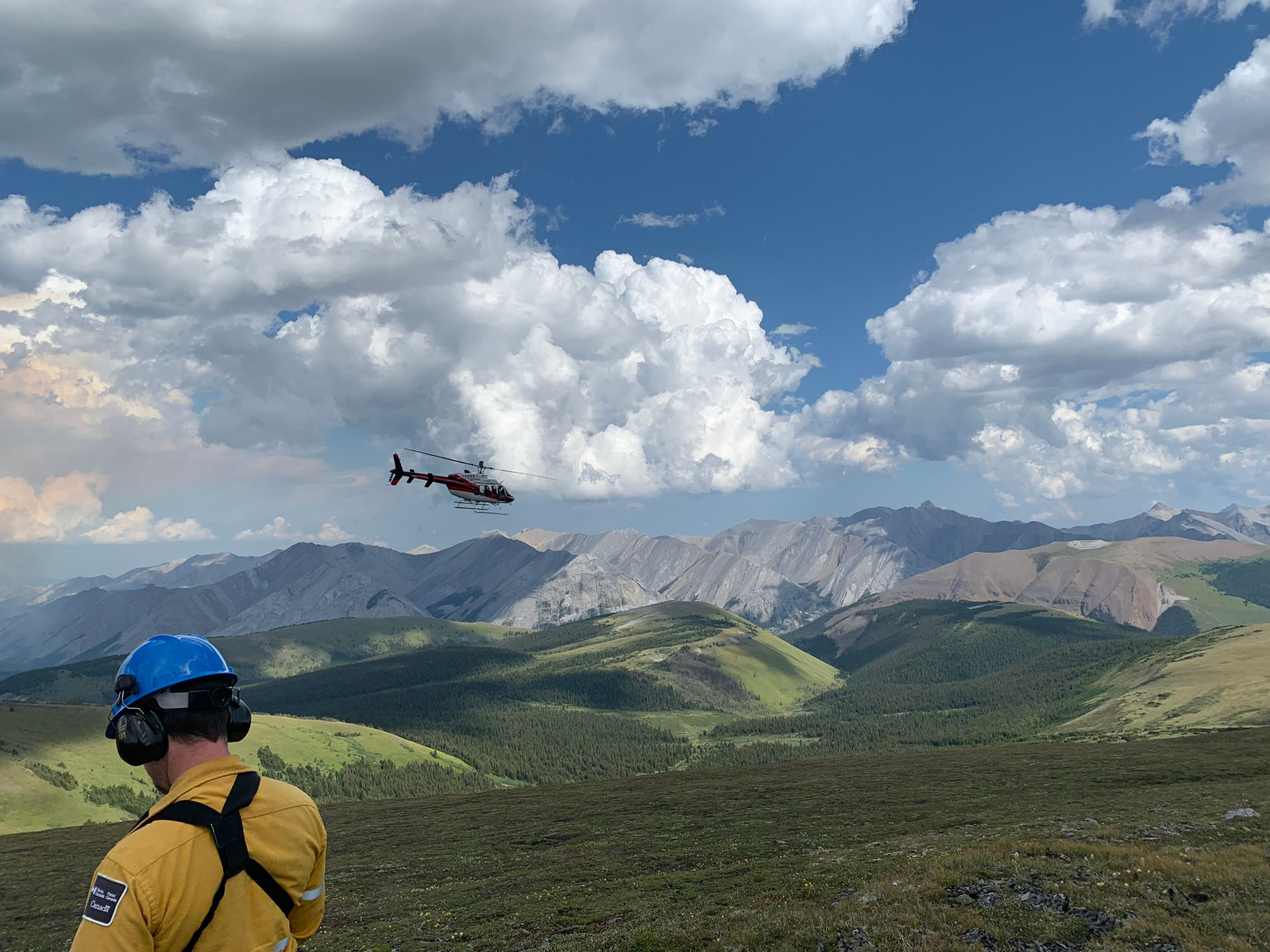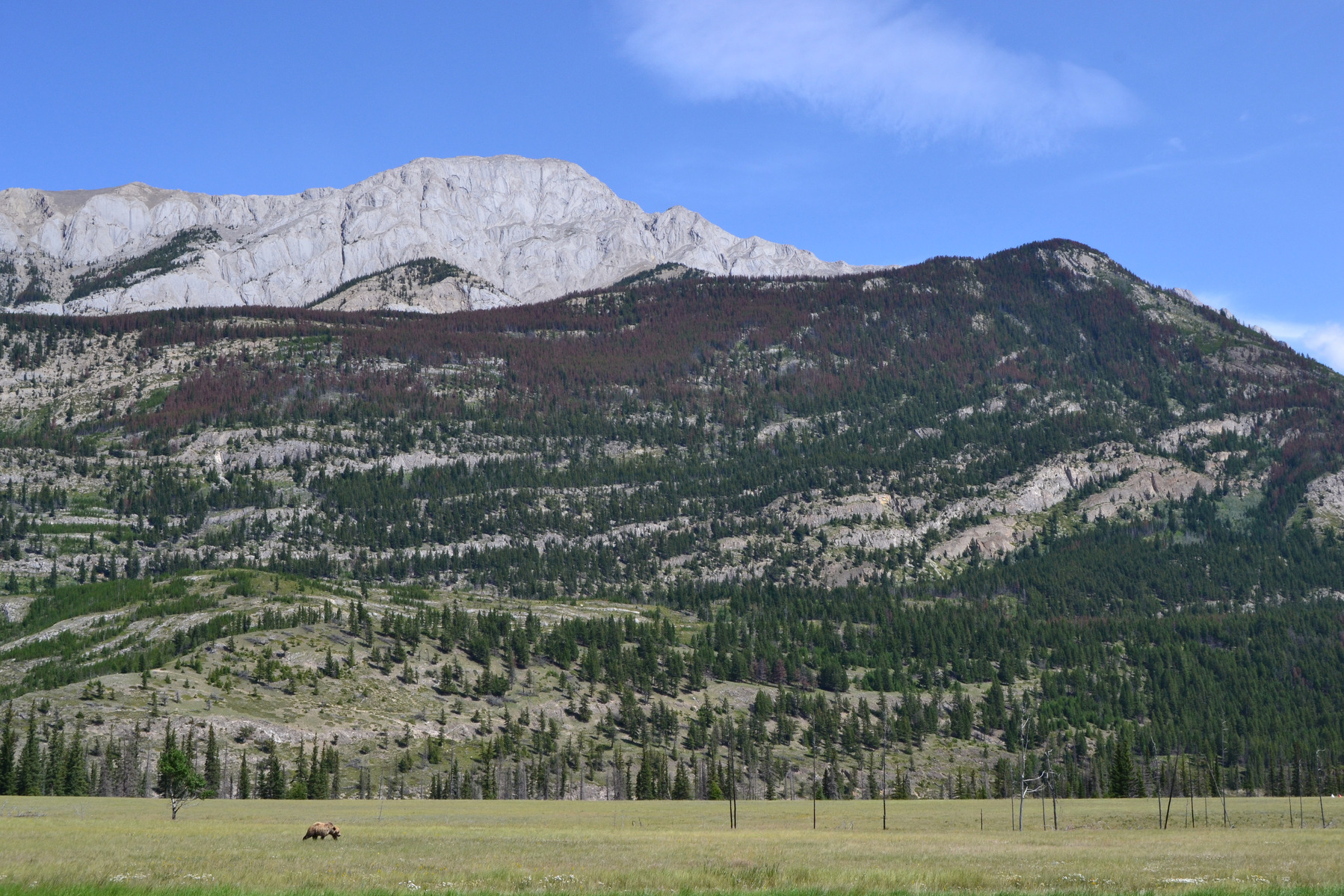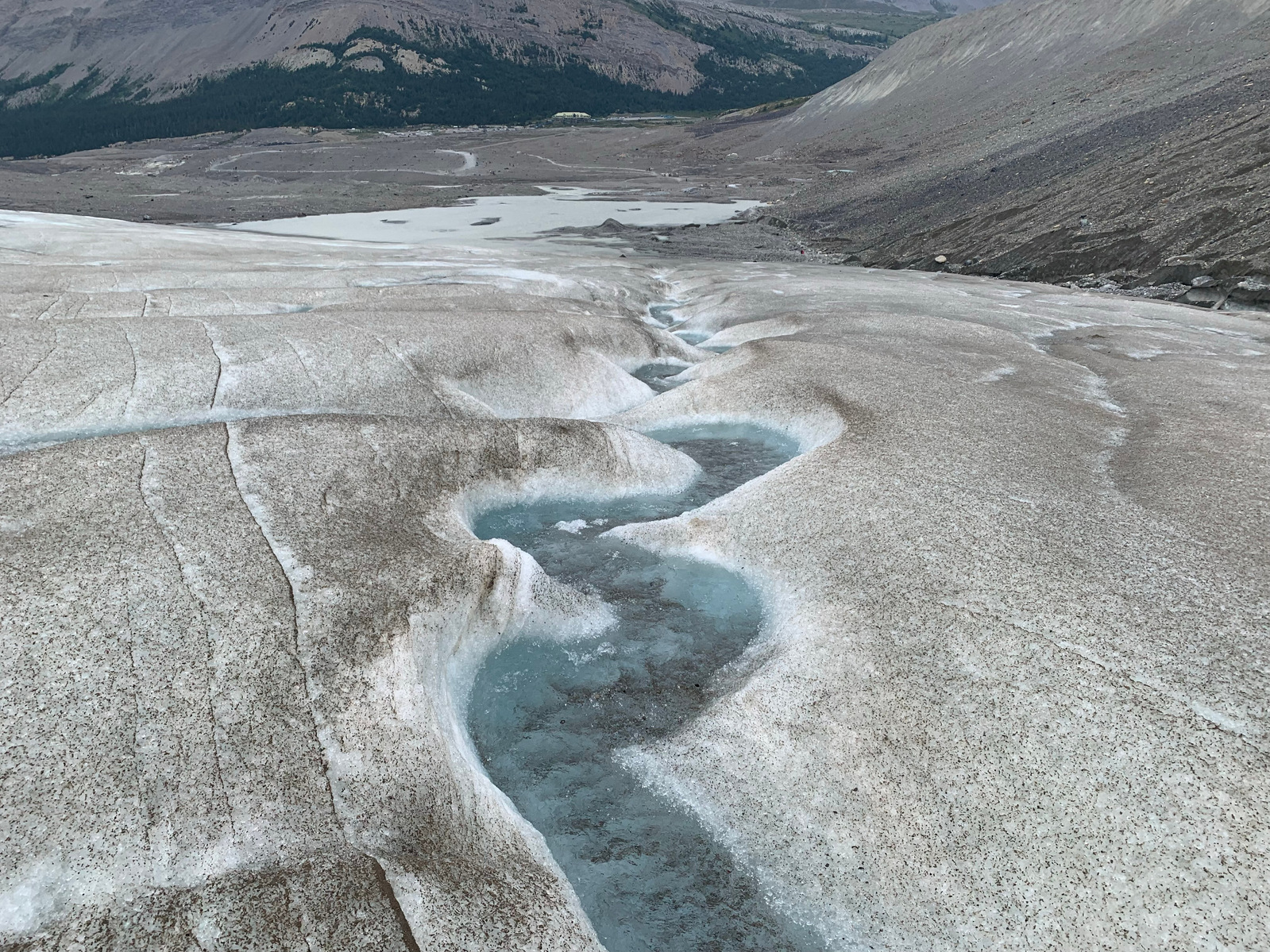A national and cultural identity ingrained with the expansive landscapes and immense natural resources that it encompasses. The history and future of Canada is deeply intertwined in the relationship between humans and their environment.
Fire explored Canadian landscapes almost as soon as biotic life arose from retreating ice sheets. The early divergence of forest types into mountain, coastal, woodlands, prairie, and of course, boreal, contextualized fire. Fed by a consistent source of lightening (that even in present-day Canada accounts for 47% of wildfire ignitions) created the first semblances of fire regimes and ecology. Then broadcast burning practices utilized by First Nation peoples, beginning 23,000 years ago, furthered solidified the ecological adaptation for fire’s processes. The inextricable linkage between human hand, fire, and landscape often propagated beneficial social and ecological services.
With European suppression of indigenous fire and practices, came different definitions to what constituted “natural resources”, and economic priorities replaced ecological ones. Cultural engagement in wildfire dissipated as individual firefighting agencies sought to remove flames and smoke from the public conscience. Forced to address the wildfire-inertia of boreal ecosystems, Canada’s provinces bolstered large suppression capacities and developed technologies to support them.
The exile of ecological fire succeeded in its short-term goal, the enhancement of natural resource revenue, but generated ominous forest health conditions. In a present day scenario, with increasingly unpredictable climate forecasts, Canada’s provincial wildfire agencies find their preferred tools gradually less applicable. Organizational cultures are not immune to environmental shifts and agency personnel express a level of cognitive dissonance on the continuation of full-suppression reliance. Frustrated by perception of poor agency adaptability, many urge a transfer to proactive prevention and mitigation strategies.

"In aboriginal times, the fire regimes of Canada were a negotiation between what nature presented and what people desired" (Pyne 2008).
Lightening bolt and indigenous firestick crafted Canada's iconic forests, grasslands, and tundra. Just like the soils in which they sprouted from or the climate that they endured, fire determined which species would persist and where.
Lodgepole or Ponderosa, black spruce and jack pine or aspen and birch; fire-adapted species spread like the mechanisms that yielded them. The creation of "fire rings : tundra (fire and frost), the boreal (fire and water ), the Great Plains (fire and grass ), the Rockies (fire and mountains), and the Coastal Forests (fire and fog )" (Pyne 2008).
Fire was wielded freely, but not without understanding, by Canada's First Peoples that used it to make their environments more habitable.
(Photo - Mountain Legacy Project)

An architectural tool on a landscape scale, First Nations utilized fire to their pertinent needs in their specific ecosystems. Old growth forests, while aesthetically pleasing, feed no one and no thing - constant regeneration and maintenance of forests and grasslands were necessary.
Freshly burned sites, saturated with ash, vitalize the growth of saplings, berries, sedge, and grass that nourish humans and game. Burning understory in particular forests allowed for travel and hunting corridors. Meadow and grassland burnings prevented tree encroachment and catered to bison hunts. In the Boreal, intentional crown fires provided protection against uncontrolled ones, and provided ample firewood for blistering winters.
Compiling traditional knowledge of fire behavior and ecology, burning techniques were refined. The knowledge represented the epitome of localism - understanding of the particular wind patterns, topography, time of year, moisture and other variables all contributed to increasing human control of fire. Yet still, fire could slip its leash.
(Photo - Mountain Legacy Project)

A recreated Haida Village at Totem Park at UBC. The Haida may have used fire in their villages for light burnings of salal and huckleberry patches.
First Nation peoples tenured fire as their premier tool of ecosystem engineering, for hunting, harvesting, travel, and residence. Views on fire-tended landscapes were not categorized, but with a high degree of interconnectedness. Communities constructed different forms of fire knowledge dissemination: through specific "firekeeping" families; or through matriarchal systems; or such as the Xwísten, in which everyone participated. Despite structures, they were consistently frameworks of emotion and cultural connectivity.

The Mountain Legacy Project, a repeat photography initiative, provides a comparative visual of landscapes over the course of a century. Side by side, the implications of alterations in land engagement become clear.
The active application and encouragement of landscape-level disturbance crafted endemic fire regimes. Forest-maintaining and forest-replacing regimes were solidified, dependent on the fuel types that thrived in particular areas. The seared forest in this 1908 photograph reflects the natural life cycle of Lodgepole Pine. A "woody fireweed", Lodgepole grows in areas beyond the reach of other pines and erupts in severe crown fires to regenerate, its fires may be curbed by ecological mosaic on the landscape.
(Photo - Mountain Legacy Project)

The same landscape from the previous photo, separated by several decades. Alterations to natural disturbance regimes and introduction of novel methods of resource extraction constitute negative impacts.
Comparatively, the landscape in this photograph reveals little heterogeneity in forest composition. Lodgepole awaits its regeneration through fire, and in this landscape, it will be continuous.
(Photo - Mountain Legacy Project)

The expansion of European influence into western landscapes curbed active application of fire. Infused by economic markets, forestry and agriculture interests reduced wildfire frequency, but increased fuel loads. A different society and a different view on the environment smothered methods of indigenous management. Economic priorities outweighed ecological ones, and the precarious mechanism of fire was removed.

The present situation in Canada's relationship with its biotic self is not equitable. Mechanized and commercial segregation has removed ecological intelligence surrounding wildfire. Recognition of restorative capabilities replaced with public anxiety and risk aversion.
The ecological ramifications compound themselves in different forms and conversations - mountain pine beetle, loss of caribou habitat, and of course, intense wildfires.

Wildfires serve as an indication of the state of the human-environment relationship.
"There are peoples who have debated the place of fire in landscapes close to their national identities. Canada is not among them. Canadians have instead expressed their connection through machines and institutions; their fire culture has been instrumental and commercial" (Pyne 2008)

The institutions, that have erected to stand between Canadian society and the natural processes of its surroundings, are some of the most proficient in the world. Tasked with amorphous responsibilities of environmental stewardship, natural resource management, and civil protection, these organizations have managed to hold the line.
Following a strong provincial government model, each of Canada's ten provinces and three territories have their own standalone, single-hazard management agencies. Each agency sets their own objectives and wildfire engagement strategies. While this model does allow for cooperation through a single coordinating body (CIFFC), resource competition between agencies does occur.

Canada's provincial and federal wildfire governance systems have unearthed powerful knowledge about wildfire, and harnessed its application for the persistence of their mission. A leader in fire technology and understanding fire's physical interactions, Canada has immense tools available. However science, when limited by political conceits to focus on systematic readiness and response, may be unequally applied for short-term tactics over long-term strategy. Raising adaptive capacity for wildfire agencies is partially dependent on the strength of science-based decision making, and sufficient funding for Canada's wildfire research establishment will be necessary to develop innovative mitigation strategies.
“We should prioritize strategizing and planning. Our current (organization) strategy reads like an Ops plan, the goals are sound but there is no long term vision” (Manager #8; AAF; August 23rd, 2019)

Carrying the burden of a natural phenomena has not been easy. One agency outlines five wildfire management objectives: communities, infrastructure, natural resources, watersheds, and wildlife. "The agency does not make it beyond the first two" (Manager #1; AAF; July 25th, 2019).
The emphasis on provincial governance in Canada results in different objectives for each, individual province. In a typical natural resource conundrum, ecosystems and their management strategies are split along jurisdictional boundaries. A spectrum of environmental mandates exist across provincial and federal agencies, as some organizations omit ecological objectives all together and others make them their primary focus.
“The agency’s language of ecological objectives is empty” (Manager #15; BCWS; September 6th, 2019)
There exists significant gaps in prioritization of ecosystem needs, and the personnel within agencies are discernibly aware.

The people that devote their energy to engaging wildfires are on the foremost edge of the human-ecological relationship. They witness the volatile incongruity that exists in our approach to nature. In a Canadian context, fire management personnel are aware of the misalignment that is occurring on fire-dependent landscapes.
"A focus should be on attracting, retaining, promoting the right people. This is more than a summer student job" (Firefighter #11; BCWS; September 15, 2019).

Among the various agencies and individuals, a range of obstruction occurs. The frameworks that exist to promote environmental integrity are far from synchronous. Prescribed fire, as well as wildfire, rarely adhere to the rules and funding structures demanded by unventilated bureaucracies. Their success is reliant on passionate individuals that strive to achieve dual social/ecological goals despite constant distraction.

“We are challenged to even get forestry people and fire people in the same room” (Manager #11; August 23rd, 2019)
Other systems cater to the industries that permeate their jurisdictions, providing a response service, not management. The saturation of landscape with oil and gas infrastructure, as well as timber allocations hinder motivation to proactively problem-solve. These land-use activities strongly support fire exclusion practices, while systemically increasing risks of future wildfires through accumulation of fuels and removal of fire-resistant species. The emphasis on extraction runs counter to "good fire", degrades forest health, and continues to undermine any adaptive forest management approach.

"In the area of fuels and forest practices, which is the largest component necessary to reduce wildfire severity and threats to communities, there has been little action/A holistic, landscape view of this problem and transformative changes to wildfire and forest management are urgently needed to achieve forest and community resilience to contemporary and future wildfires" - White Paper from Lori Daniels, Bob Gray, and Philip Burton to BC Premier
Consequences of an absent ecological conscious include warmer winters and decrepit forests, leading to rising disease susceptibility. Mountain Pine Beetle has ravaged western North America, creating ominously hazardous conditions for future conflagrations. The effects have radiated to the preeminent timber industries of Canada - economic systems interlinked with environmental ones.

An era of efficient fire suppression has promoted non-resilient communities. Most homes, neighborhoods, towns, and their supporting utilities have been constructed without discernment for the environments they inhabit. Upscaling communities to become "fire-adapted" is a herculean task, and has been regulated as another responsibility of wildfire agencies. In attempt to address the risk, without enacting market-altering legislation or infringing on modern rights of personal property, agencies have taken a route of vegetation management - clearing excessive fuel around communities.

“FireSmart has been delivered top down. Grassroots up is necessary. It will be a bad day when FireSmart [vegetation] treatment works but homes still burn down because private homeowners haven’t taken up [responsibility]” (Manager #6; AAF; August 19th, 2019)
Vegetation management is a crucial tool in the protection of communities, but as a singular method, it will not prevent losses. FireSmart Canada, a government program to enhance public knowledge of wildfire and best protection practices lists vegetation management as one of its seven disciplines. The others include: emergency planning, education, legislation, development considerations, cross-training, and interagency cooperation. The comprehensive achievement of these disciplines requires non-wildfire agencies, industries, and communities to accept a semblance of responsibility for wildfire mitigation. The redistribution of risk management is necessary, but politically unpalatable, despite the eagerness of wildfire specialists to facilitate knowledge exchange. Instead, vegetation management receives the bulk of the millions funneled into FireSmart because it incites the least political friction and social integration. Vegetation management alone cannot prevent community destruction, and the achievement of other disciplines cannot be possible under the sole tutelage of FireSmart. The Demonstration Forest seen in this photo represents another approach - utilizing fire-resistant ecology to a community's advantage.
"The best long-term solution will involve a suite of prevention measures that include defensible space as well as building design approach, community education and proactive land use planning that limits exposure to fire" - Alexandra Syphard

In one province, all fire reports are met with an immediate "double-dispatch", in which an air tanker and helicopter ferrying firefighters are sent regardless of the fire's potential. There is no mechanism of "modified response", where fires may be allowed to exist or grow.
“Not using modified response in a year [2019] like this is telling” (Researcher #6; BCWS; September 15th, 2019)
Many express that reliance on fighting back is futile in a long-term view. A single, antagonistic and reactionary path does not have a reconcilable future for forests or people. There are calls to raise the ecological intelligence and stewardship within land-users and institutions.

In a survey I conducted of 47 Canadian wildfire specialists, questions were posed to unearth organizational narratives regarding the current and future states of wildfire management. When prompted on the topic of "restoring fire to the landscape", 93% of participants emphasized that restoring fire to the landscape should be a priority for agencies. 80% of the participants advocated that the restoration should be both active and passive - meaning that wildfire agencies should be applying fire and allowing some fires to grow under managed conditions
When participants were asked to select an area for improvement for wildfire agencies, "Strategic Use of Fire" was selected 25% of the time- the second highest selection of any category. The least selected: suppression with 1%.
When asked to point to an area of strength for wildfire agencies, suppression operations received a selection rate of 76%. Some participants opted for an unexpected category: "No Area of Strength" received 5.5%.

The individuals within Canada's wildfire governance are not immune to the incongruities of the commercial and institutionalized approach to landscapes. The frustration is palpable as climate and human dimensions tarnish their capacity to curb rising environmental and social damages.
When survey participants were asked to rate their agencies ability adapt to growing challenges, 47% indicated that they had zero to little confidence in their own organizations. An additional 30% identified some confidence, and only 26% expressed a high degree of confidence.

“There is misunderstanding from the public of what we do and what our capacity is. We used to protect the woods, now we can only try to protect our heels. Need to look to fire departments and how they’ve done awareness. One idea is ‘red rock, green rock’, where we walk through a community a place a red or green rock on which houses we can save and which we cannot so that it can resonate with homeowners what our abilities are” (Firefighter/Manager #22; BCWS; September 7th, 2019)
“Homeowners need to share responsibility. Must recognize the home ignition zone. And ‘fire’ people have a responsibility to facilitate” (Researcher/Manager #25; BCWS; September 15th, 2019).

A different approach to environmental management, and inevitably wildfires, is rooted in deep social code. It does not change quickly or easily.
Wildfire organizations themselves, must embody the calls for improving the relationship. Healthy introspection and open communication in organizations will yield new ways of thinking and engaging.

The calls that echo within wildfire management circles are beginning to radiate outwards, as persistent smokey summers publicly expose a problem. For British Columbia, the combined 2.5 million incinerated hectares of 2017 and 2018 have spurned a degree of recognition within political and social circles. Those previously unaware that a new era of mega-fires can escape response capabilities have been given fair warning. A mitigative solution necessitates prolonged support and even then, it may be a challenge too large for a single agency.
"I know our staff definitely feel that we are losing our way somewhat with all the added responsibilities being placed on fire agencies. The notion of our single core responsibility being suppression/response has disappeared as now there are multiple responsibilities rather than just being wildland fire people. Perhaps those days are gone and this really is the new normal in terms of the business of wildland fire" (Manager #37, BCWS; August 28th, 2020)
The landscapes that derive Canada's land-use activities, natural resources, national identity are being challenged in novel and complex ways. There are innovative tools and deep archives available that can guide decisions with greater detail than before.

Canada's research and management personnel have valuable voices and knowledgeable ideas. Their conversations have generated strategic blueprints and insightful post-incident recommendations. They are eager to facilitate knowledge to communities, curious to hear of the innovative ideas of their counterparts, and enthusiastic to prioritize ecological integrity. The individuals devoting themselves to remediating Canada's relationship with fire resemble the agencies' greatest strength. Agencies would benefit by aligning their organizational structures to match the belief systems of their personnel.












